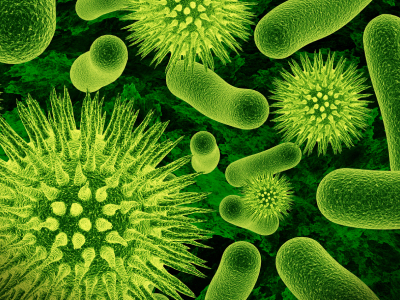
- Scientists at the University of Sheffield have discovered that bacteria can directly measure differences in chemical concentration along the length of their cell bodies, contrary to decades of established scientific belief.
- Previous studies have argued that bacterial cells are too small to directly detect differences in chemical concentrations, including chemicals such as nutrients and antibiotics used to treat infections.
- The research focused on a bacterium called Pseudomonas aeruginosa, which is listed by the World Health Organization as a priority pathogen because of its ability to cause highly antibiotic-resistant infections.
- The discovery could shed new light on how bacteria direct their motility during infections and ultimately lead to new targeted clinical treatments.
Scientists at the University of Sheffield have discovered a new sensory ability in bacteria that could transform treatments for bacterial infections.
Bacteria were previously thought to be too small to directly sense differences in chemical concentration. However, contrary to decades of established scientific belief, a new study has shown that bacteria can actually directly sense their chemical environment along the entire length of their cell bodies with an unprecedented degree of precision.
The research, published today on Microbiology of nature, represents a fundamental step towards the development of innovative treatments that manipulate bacterial motility to improve the efficacy of antibiotics.
The study focused on Pseudomonas aeruginosawhich has been included in the list of priority pathogens by the World Health Organization because of its ability to cause highly antibiotic-resistant infections in humans.
Lead author of the study, Dr William Durham, lecturer in biological physics in the Department of Physics and Astronomy at the University of Sheffield, said: “In principle, cells can understand whether they are moving toward or away from a nutrient source in two different ways.
“First, they can wander around randomly and measure whether the concentration increases or decreases over time. Alternatively, cells can measure changes in concentration along the length of their bodies, which allows them to move directly toward the source. Our research shows that bacteria can do the latter, which was previously thought to be beyond their capabilities due to their small size.
“The bacteria then use this information to move across surfaces toward chemical sources using tiny hooks called pili.”
Developing a combination of innovative and novel microfluidic experiments P. aeruginosa strains whose motility systems were engineered so they could be directly imaged using powerful microscopes, the researchers mapped how individual cells responded to precise changes in nutrient concentrations. They found that these cells could compare nutrient concentrations along the length of their cell bodies, a phenomenon called “spatial sensing.”
Dr Jamie Wheeler, a postdoctoral researcher in the Department of Physics and Astronomy at the University of Sheffield and lead author of the study, said: “This work upends our understanding of how bacteria navigate and sense their environment. As such, it sheds new light on how bacteria might direct their motility during human infection and potentially how it could be manipulated by different clinical treatments.”
The finding means that bacteria don’t have to move to sense changes in their chemical environment, suggesting that densely packed bacteria in localized infections can use this information to guide their behavior. This ability raises new questions about the mechanisms bacteria use to make these microscopic measurements and how they might be manipulated by antimicrobial treatments.
Dr. Wheeler continued: “As is often the case, answering a question has raised a whole new set of unknowns. Exciting new experiments are already being planned to continue writing this new chapter in our understanding of how bacteria move through their environment.”
Republished courtesy of the University of Sheffield
#discovery #bacteria #move #environment #change #treat #infections